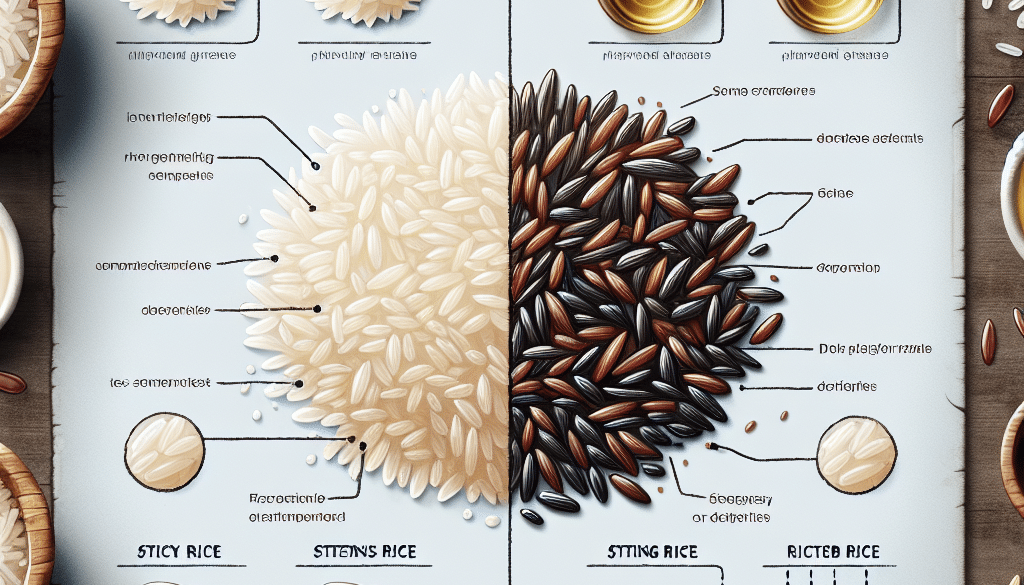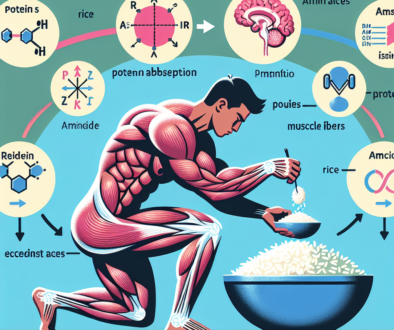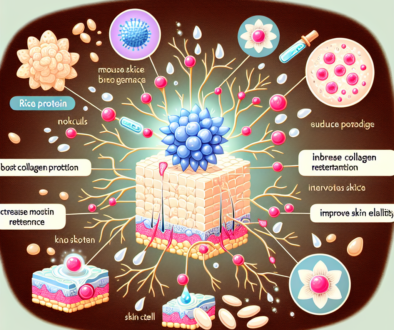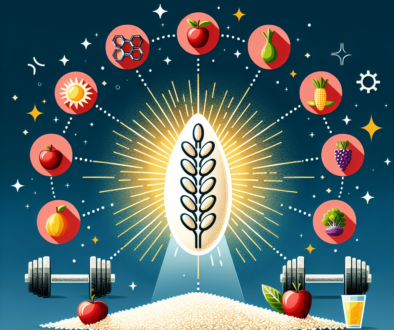What Is The Difference Between Sticky Rice And Glutinous Rice?
-
Table of Contents
- Understanding the Difference Between Sticky Rice and Glutinous Rice
- What is Sticky Rice?
- What is Glutinous Rice?
- Comparing Sticky Rice and Glutinous Rice
- Culinary Applications of Sticky/Glutinous Rice
- Nutritional Profile and Health Considerations
- Cooking Techniques for Sticky/Glutinous Rice
- Conclusion: Embracing the Sticky Qualities
- Discover ETprotein’s High-Quality Protein Products
Understanding the Difference Between Sticky Rice and Glutinous Rice
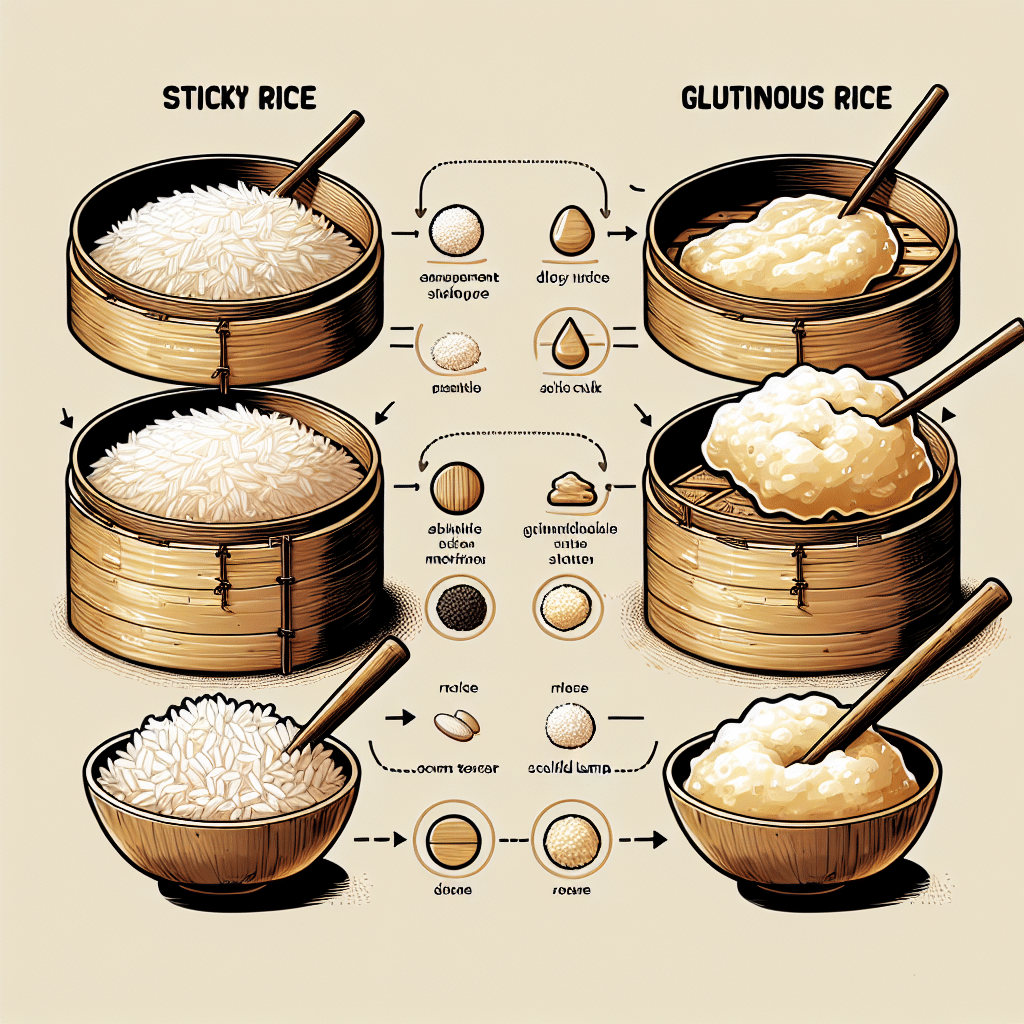
When it comes to Asian cuisine, rice is not just a staple; it’s an art form. Among the various types of rice, sticky rice and glutinous rice often cause confusion due to their similar characteristics. However, understanding the nuances between these two types of rice is essential for culinary enthusiasts and professionals alike. This article will delve into the differences, uses, and cultural significance of sticky rice and glutinous rice, providing valuable insights into these unique grains.
What is Sticky Rice?
Sticky rice, also known as sweet rice, waxy rice, or by its Thai name, ‘khao neow’, is a type of rice that becomes sticky when cooked. This characteristic is due to its high amylopectin content, a type of starch that is responsible for the rice’s glue-like consistency. Sticky rice is predominantly grown in Southeast Asia and is a key ingredient in many traditional dishes from the region.
What is Glutinous Rice?
Glutinous rice, despite its name, does not contain gluten. The term ‘glutinous’ comes from the glue-like property it exhibits after cooking. In fact, glutinous rice and sticky rice refer to the same type of rice. The confusion often arises from the different names it is called in various cultures and languages. Glutinous rice is also primarily composed of amylopectin, which gives it a chewy texture and the ability to stick together.
Comparing Sticky Rice and Glutinous Rice
Since sticky rice and glutinous rice are essentially the same, comparing them might seem redundant. However, it’s important to understand that the terms are used interchangeably depending on the cultural context and the culinary application. Here are some insights into their similarities and differences:
- Terminology: ‘Sticky rice’ is commonly used in English-speaking countries, while ‘glutinous rice’ is often used in scientific and agricultural contexts.
- Culinary Uses: Both terms refer to rice that is preferred for making dishes that require a sticky, cohesive texture, such as sushi, mochi, and various desserts.
- Cultural Significance: In different Asian cultures, this type of rice has various names and is used in traditional ceremonies and festivals.
Culinary Applications of Sticky/Glutinous Rice
Sticky rice is versatile and can be used in a wide range of dishes. Here are some examples:
- Sweet Dishes: In Thailand, sticky rice is famously paired with mango and coconut milk to create ‘mango sticky rice’, a beloved dessert.
- Savory Dishes: In Chinese cuisine, glutinous rice is used to make ‘zongzi’, a traditional bamboo leaf-wrapped dumpling filled with meat, beans, and other ingredients.
- Snacks: Japanese ‘mochi’ and Filipino ‘bibingka’ are snacks made from glutinous rice flour, showcasing the rice’s versatility beyond whole grain form.
Nutritional Profile and Health Considerations
Sticky rice is a good source of carbohydrates and provides energy. However, it has a higher glycemic index compared to other types of rice, which means it can cause a rapid increase in blood sugar levels. People with diabetes or those watching their blood sugar may need to consume it in moderation. Despite this, sticky rice is gluten-free and can be a suitable option for those with gluten intolerance or celiac disease.
Cooking Techniques for Sticky/Glutinous Rice
Cooking sticky rice requires specific techniques to achieve the perfect texture. It is traditionally soaked for several hours or overnight and then steamed, rather than boiled, to maintain its distinct stickiness. Specialized equipment like bamboo steamers or rice cookers with a sticky rice setting can be used for this purpose.
Conclusion: Embracing the Sticky Qualities
In conclusion, sticky rice and glutinous rice are two names for the same type of rice, known for its sticky, chewy texture after cooking. This rice plays a significant role in various Asian cuisines and cultural traditions. Whether used in sweet or savory dishes, its unique properties make it an indispensable ingredient in many beloved recipes. By understanding the characteristics and uses of sticky/glutinous rice, food enthusiasts can better appreciate the diversity and richness of Asian culinary arts.
Discover ETprotein’s High-Quality Protein Products
If you’re looking for high-quality protein products to complement your diet or culinary creations, consider ETprotein’s offerings. Their extensive range of organic bulk vegan proteins, including Organic rice protein, is an excellent addition to a variety of dishes, providing a neutral taste and non-GMO, allergen-free attributes. ETprotein’s products cater to various industries, ensuring that you have access to the best protein solutions for your needs.
About ETprotein:
ETprotein, a reputable protein and L-(+)-Ergothioneine (EGT) Chinese factory manufacturer and supplier, is renowned for producing, stocking, exporting, and delivering the highest quality organic bulk vegan proteins and L-(+)-Ergothioneine. They include Organic rice protein, clear rice protein, pea protein, clear pea protein, watermelon seed protein, pumpkin seed protein, sunflower seed protein, mung bean protein, peanut protein, and L-(+)-Ergothioneine EGT Pharmaceutical grade, L-(+)-Ergothioneine EGT food grade, L-(+)-Ergothioneine EGT cosmetic grade, L-(+)-Ergothioneine EGT reference grade and L-(+)-Ergothioneine EGT standard. Their offerings, characterized by a neutral taste, non-GMO, allergen-free attributes, with L-(+)-Ergothioneine purity over 98%, 99%, cater to a diverse range of industries. They serve nutraceutical, pharmaceutical, cosmeceutical, veterinary, as well as food and beverage finished product distributors, traders, and manufacturers across Europe, USA, Canada, Australia, Thailand, Japan, Korea, Brazil, and Chile, among others.
ETprotein specialization includes exporting and delivering tailor-made protein powder and finished nutritional supplements. Their extensive product range covers sectors like Food and Beverage, Sports Nutrition, Weight Management, Dietary Supplements, Health and Wellness Products, and Infant Formula, ensuring comprehensive solutions to meet all your protein needs.
As a trusted company by leading global food and beverage brands and Fortune 500 companies, ETprotein reinforces China’s reputation in the global arena. For more information or to sample their products, please contact them and email sales(at)ETprotein.com today.

